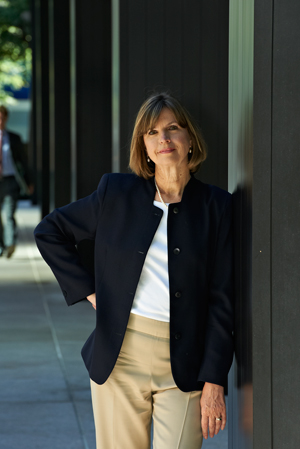Despite a bleak economic climate, American architects are making the most of their skills.
November is a month of darkening days, and this year it arrives with an extra chill for the design profession. As the mercury began to dip across most of America, so did the numbers in the Architects Billing Index, down a sudden five points in September, to 46.9. Many of record’s readers don’t need to see that statistic, however, to know how tough this economic climate continues to be for architects, particularly those primarily engaged in residential and commercial design in the United States.

Still, the profession remains alluring: The best architecture schools have their pick of students, and this month we report on DesignIntelligence’s annual ranking of undergraduate and graduate programs around the country. Yet the field those graduates will enter in the years ahead is changing rapidly, not just because of the economy but because many architects are redefining what they do: They are increasingly engaged in areas such as urban design, environmental advocacy, and advancing digital technology. And that’s good news.
Recently, I heard Jeanne Gang of Studio Gang in Chicago give a talk about her work. Just weeks before, she’d been awarded a MacArthur “genius” grant. This is only the fourth time an architect has won the honor—and the no-strings-attached five-year award of $500,000 that comes with it. Gang is a quintessentially American architect: As a woman with her own firm, she can certainly be called a pioneer. The daughter of a civil engineer in Illinois, she fell in love with building, materials, and infrastructure at an early age. Her most famous project, the 82-story Aqua tower in Chicago, took the classic American skyscraper and provided a twist with the innovative curving, cantilevered poured-in-place concrete floors that give the building its distinctive sensuous facade.
Yet Gang talks as much about ideas as she does about her built work. Her design method—like that at OMA, the Rem Koolhaas office where she worked early in her career—involves extensive research and open collaboration among the 30 young architects in her studio. And what occupies Gang’s thinking is broad: the Chicago River and the deteriorating ecosystem of the Great Lakes; how to repurpose derelict factories in the inner-ring suburbs that have become the “arrival gates” for new immigrants; how to take an indigenous compressed-earth brick in India and make it stronger—to give just a few examples. Gang sees architecture as “touching on issues that go beyond the single building.”
In this month’s issue, we celebrate design with an American stamp. And while we are looking at projects that are single buildings, each is having a significant impact on its surrounding context and the public realm. Each design reflects, too, a certain pragmatism and egalitarianism, no matter the size of the budget. Whether a modest church in Arkansas or a vintage North Carolina warehouse turned art museum, they show off an American can-do spirit. A poetry center of glass and zinc translates Miesian corporate urbanity into an oasis for the quieter pursuits of literature—while connecting powerfully to the Chicago streetscape. A high-drama design by a Massachusetts architect for a museum in Tel Aviv makes the case that some of the most adventurous buildings by homegrown Americans are built overseas, where clients tend to be more open to pushing the envelope.
These architects, besides designing innovative and imaginative single buildings, are, like Gang, spending a lot of time outside the office—training the next generation of architects, engaging in their communities, or helping to tackle global issues such as poverty and sustainability. It’s one way of diversifying—not a bad strategy these days—and, in the process, making the profession of architecture more vital to our world.






Post a comment to this article
Report Abusive Comment